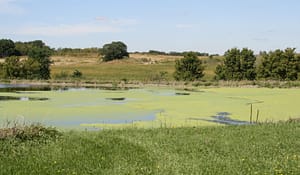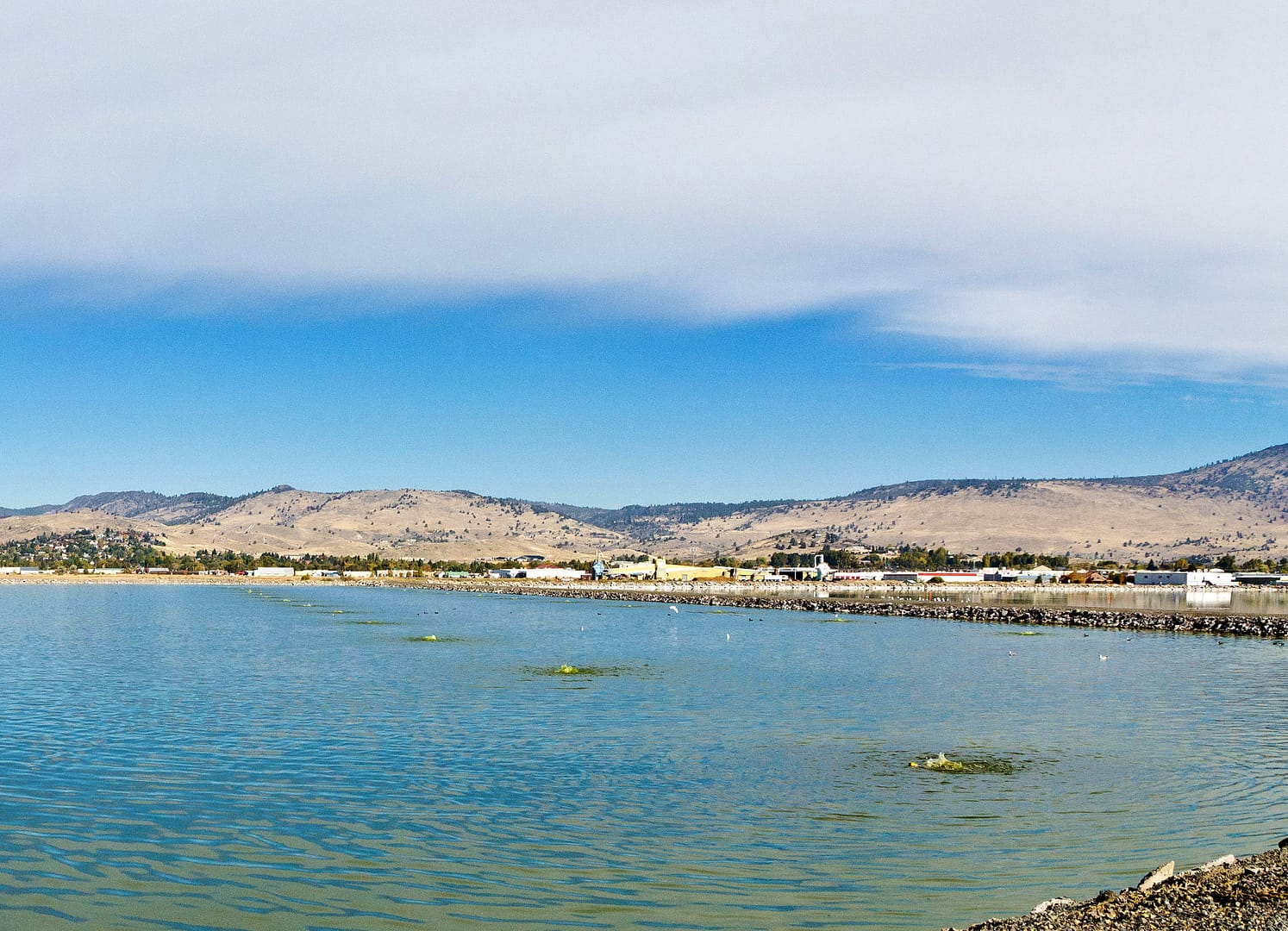The wastewater lagoon operator has many tools at his or her disposal to determine the overall condition of a lagoon. Lagoon sampling and testing, of course, are the main methods, but even without equipment, the lagoon operator can get valuable diagnostic clues from sensory information. In a previous blog post, What color is your wastewater lagoon?, we covered what you can learn from a visual inspection. In this brief article, we’ll outline what different lagoon odors can reveal about lagoon health. The following is adapted from the EPA’s Principles of Design and Operations of Wastewater Treatment Pond Systems for Plant Operators, Engineers, and Managers.

Faint pond smell when nearby
The ideal, when a lack of objectionable odor is accompanied by clear sparkling blue-, brown-, or green-tinged water and minimal algae growth. If red streaks are present, however, there could be an overgrowth of Daphnia water fleas, indicating low lagoon dissolved oxygen (DO).
Earthy lagoon odors, brownish water

Earthy or grassy lagoon odors, green water

Fishy lagoon odors

Sulfurous lagoon odors
A sulfurous, rotten egg smell is the result of insufficient DO, with oxygen-stressed conditions and anaerobic digestion. The water is likely a dull gray and there may be floating mats of sludge.
A sulfur odor may also accompany a red or pink water: Purple sulfur bacteria thrive with organic overloading and insufficient aeration, and Daphnia water fleas (shown at right) create red patches when stressed by lack of their oxygen-dependent food source.
It’s important to intervene when a sulfur odor is present by adding aeration—if left unchecked, the lagoon will go septic.
Septic sewage lagoon odors

A raw sewage odor means lagoon failure: There is not enough DO or circulation to digest influent BOD, so waste just accumulates and digests anaerobically, which is slow and releases foul odors. In addition to being an olfactory nuisance, these sewage odors are often blamed for headaches, eye irritation, and respiratory problems. Local residents limit time outdoors to escape the foul smells and become very unhappy.
Lagoons don’t have to smell bad
A healthy, well managed lagoon is virtually odorless from a distance, and should not be generating complaints from the neighbors. It has sufficient dissolved oxygen levels to allow the bacteria to break down the BOD. In addition, robust mixing through the water column keeps solids in suspension, promoting aerobic conditions for expedient BOD removal. Mixing also keeps sludge at bay to maximize the lagoon’s capacity and maximize treatment time: Sludge buildup takes up valuable volume that will shorten retention times, and adequate retention time is critical to the lagoon process.
Plus, if sludge degrades anaerobically, it can increase lagoon ammonia levels—also known as fertilizer!—into the water. These fertilizers stimulate algae blooms, which will remove oxygen from the lagoon, thereby increasing your BOD and TSS levels, and potentially causing strong grassy or fishy lagoon odors.
Sufficient aeration and mixing will correct or prevent virtually every cause of lagoon odor. Triplepoint’s Ares Aeration® unit provides both aeration and mixing, combining the mixing advantages of lagoon coarse bubble diffusers with the efficiency of fine bubble diffusers in a high flexibility, low maintenance, portable unit. For more information, download our Ares Aeration Literature or contact us and we will be happy to help you with your lagoon aeration project.


